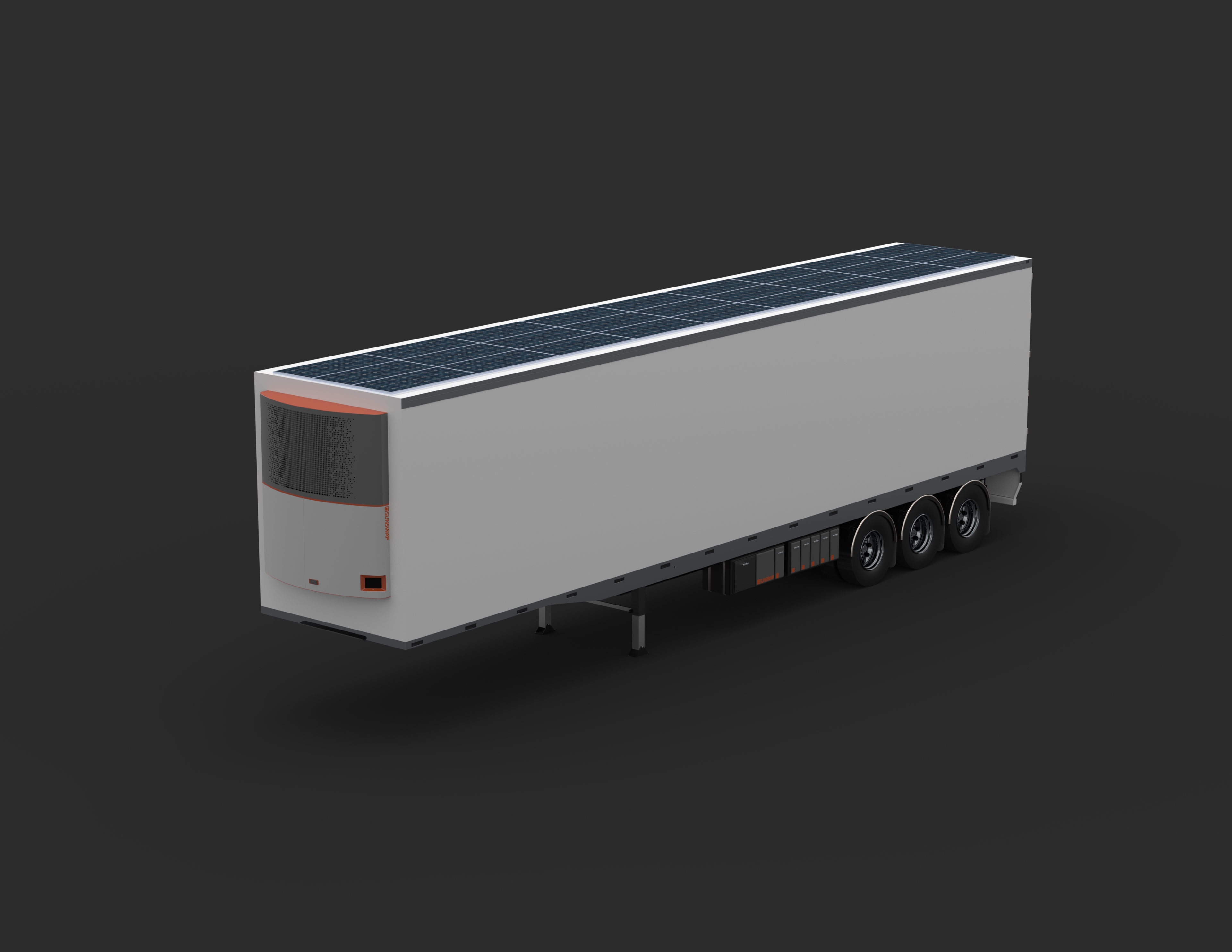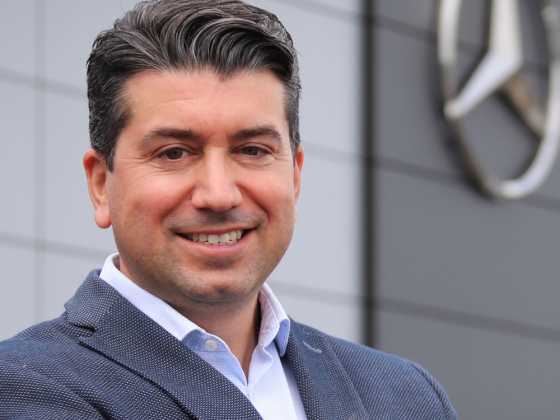Greening refrigerated transport

The environmental and financial impacts, plus tightening legislation and corporate social responsibility, mean refrigerated transport requires a clean and economical alternative to diesel auxiliary engines, writes Victor Lejona, a technical specialist in sustainable transport at Cenex.
Keeping perishable goods cold, from food to pharmaceuticals, and transporting them the length and breadth of the country, takes a lot of energy.
There are around 100,000 refrigerated vehicles in the UK, most of them powered by diesel and the majority of those rely on an auxiliary diesel engine to provide power for the cooling system, known as a Transport Refrigeration Unit (TRU).
These TRUs account for up to 95 per cent of all particulate matter (PM) emissions and 40 per cent of all nitrogen oxides (NOx) emissions from a modern Euro VI refrigerated vehicle, and the fuel costs of TRUs in the UK will increase by 70 per cent from 2022 with the removal of the red diesel subsidy.
The environmental and financial impacts, plus tightening legislation and corporate social responsibility, mean customers require a clean and economical alternative.
The environmental Issue
In terms of carbon emissions, auxiliary engines for transport refrigeration have a significant impact, as the average diesel trailer TRU typically consumes around 3,000 litres and produces around eight tonnes of tailpipe CO2 per year, equivalent to four average UK cars in a year.
In a study commissioned by Transport for London in 2017, Cenex - an independent, low emission transport and energy research technology organisation (RTO) and consultancy - estimated that diesel TRUs account for around nine per cent (83,500 tonnes per year) of all well-to-wheel CO2 emissions from temperature-controlled transport that enters London.
If we compare the latest emissions standards (stage V NRMM) for auxiliary TRU engines against the latest Euro VI standards from truck main engines, auxiliary engines emit 16 times more NOx and 40 times more PM per kWh of energy.
And this is an optimistic estimate, as the standards were introduced in 2019 as opposed to 2013 for Euro VI truck engine standards, meaning that most auxiliary TRU engines on the road do not comply with them.
In fact, prior to 2019, new diesel auxiliary TRU engines were not obliged to comply with any emission standard at all if they operated within UK borders.
In a study of TRU emission in Leeds, Cenex estimated that, with the implementation of a Class B clean air zone (CAZ) where most vehicles are Euro VI compliant, TRU emissions would then account for around 54 per cent of all NOx emissions from temperature-controlled transport vehicles as traction engines emissions reduce.
With more UK cities implementing CAZs, and the necessity to reduce emissions from transport, the demand for a cleaner alternative mode of powering refrigerated vehicles will only increase.
The economic issue
Using diesel to power TRUs has so far been the most economic option due to the fuel price.
TRUs use red diesel which can be legally used in “excepted vehicles”, for example in agricultural vehicles, construction vehicles and mobile generators, including the TRU auxiliary engine.
Red diesel is chemically identical to regular diesel other than its red dye (to facilitate its detection when used illegally), and is taxed at a lower rate than regular diesel - historically at 11.14 pence per litre, compared to 57.95 pence per litre for regular diesel.
The UK government, however, announced the removal of the red diesel entitlement from April 2022 onwards in its 2020 budget, except for agricultural vehicles.
When both fuels reach tax parity in 2022, the fuel cost of TRUs will increase by 70 per cent, and a typical trailer TRU using 3,000 litres per year in fuel will cost an additional £1,400 per year in increased taxes.
This highlights an interesting opportunity to move TRUs to non-conventional and lower emitting fuel sources.
Alternatives to diesel
There are currently three alternative TRU technologies to using auxiliary diesel: alternative fuels, cryogenics, and electrification.
Hydrotreated Vegetable Oil (HVO) is produced from virgin and waste vegetable oils and can be used directly in diesel TRUs with no impact on operational requirements, as it is classified as a ‘drop-in’ fuel, with greenhouse gas emission savings of 91 per cent compared to red diesel.
Similarly, bespoke TRU auxiliary engines in America are also fuelled with compressed natural gas (CNG), liquefied natural gas (LNG), liquefied petroleum gas (LPG), and their renewable versions (biomethane and bio-LPG) - Cenex has researched these technologies in the past, and the use of biomethane (bio-CNG and bio-LNG) can result in CO2 savings of 80 per cent when compared to diesel.
Cryogenic systems use liquid nitrogen, liquid air, or liquid CO2, either by releasing the cooling gas into the cargo space, or via a heat exchanger.
Marks & Spencer and Starbucks have trialled indirect cooling using liquid nitrogen in the past, while Sainsbury’s and Marks & Spencer have also trialled TRUs powered by a liquid nitrogen engine since 2016 and 2018, respectively, however none of these have had any real commercial success due to high capital and operating expenditure.
Finally, electricity, sourced from a battery, fuel cell, or even a solar photovoltaic array, can also be used to power the compressor in a refrigeration system, and is being investigated as an alternative to diesel where it may pose a better business case as a result of increasing technological advancements.
Electric powertrains are more efficient than auxiliary diesel engines, providing significant fuel cost savings, and the inclusion of renewable energy can further enhance the cost savings and green credentials.
Pure electric vehicles have been combined with eutectic plates or heat batteries, the latter used in the research project that finished in 2019 involving the Iceland retail company, vehicle builders Paneltex, the heat battery developer Sunamp, and the LowCVP.
Zero emission refrigerated operations
Electrification technology is being researched by Sunswap - a start-up developing electric transport refrigeration technology utilising energy prediction, adaptive battery capacity and solar power to decarbonise the cold chain - and Cenex, in the Innovate UK funded project ZERO: Zero Emissions Refrigerated Operations.
Together, the two companies are developing a next generation electrical architecture for a solar & battery powered TRU that lowers emissions and meets real customer operational requirements.
The solution proposed by the project is to replace the diesel TRU with a solar and battery powered system.
At the core of the product is the patent-pending battery technology, charged by renewable solar energy, which will enable the TRU to meet a wide range of customer requirements, with the trailer roof covered with solar panels to provide extra on-board energy.
In order to understand the needs and operational patterns, such as variations in grid capacity, fleet downtime and charging speeds, Cenex has formed a Customers Requirements Group, comprising supermarkets and logistics operators such as Aldi, Howard Tenens, Ocado, Sainsbury’s, Tesco, Waitrose and Wincanton, as well as refrigerated vehicle leasing provider Petit Forestier, the Cold Chain Federation industry body, and vehicle builders Gray & Adams, Paneltex and Solomon Commercials.
A refrigerated fleet techno-economic model and report on the environmental benefits of the solution is being produced by Cenex, and the results will inform Sunswap's development to refine the design of a TRU electrical system that provides a solution with an attractive business case and zero emissions.
Demand for a solution
Environmental and social responsibility is driving the industry, and in particular supermarkets, to lower their fleets’ emissions.
Sustainability targets and the pressures from customers for valid green credentials, combined with the imminent rise in fuel costs, present a unique opportunity for refrigerated vehicles to now begin the transition to zero emissions vehicles.
The solutions need to be attractive business propositions - economically, operationally and environmentally - and, while the research is ongoing, there is confidence the sector can fully decarbonise.






